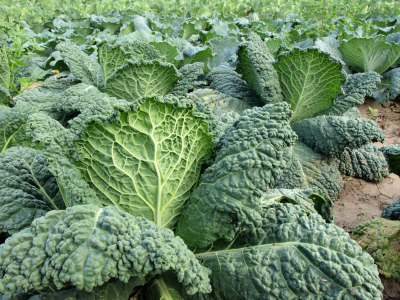 Rob M.
Rob M. | How to Maximize your Nutrient Intake per Calorie
Oct 5, 2011 at 1:23 pm |
At a recent health fair we attended in RTP, I was given a pamphlet by a Whole Foods nutritional representative outlining a relatively new nutritional index that Whole Foods has adopted called the Aggregate Nutrient Density Index (ANDI). Whole Foods lists the ANDI score of a number of foods they sell at their stores, and were explaining the index and how it works. The ANDI was developed by Dr. Joel Furhman as a way to measure the number of nutrients per calorie of a given food. In other words, foods with a high ANDI score are very nutritionally dense offering a high quantity of vitamins, minerals, phytochemicals, antioxidants, etc. per calorie of food. Foods with a low ANDI score offer a comparatively low quantity of nutrients per calorie of food, although this is not to say that they don't still offer something that our body needs, like fat, protein, carbohydrates, etc.
In reading through some literature about the ANDI, it seems it is very much what it says it is, a measure of nutrient density. This is does not mean that the ANDI should be used to cherry pick foods that score at the top of the index and ignore those at the bottom. The idea of the ANDI is to eat a balanced diet, with appropriate quantities from each food group, and to use the index as a guide in making decisions on food choices within each food group. The idea is that we should be getting the most 'bang' for our calorie buck, by maximizing our nutrient intake per calorie in a balanced diet. Dr. Furhman believes that this is a recipe for disease prevention, weight loss, and maintaining a healthy diet.
The ANDI is just a tool, but at the very least it's an interesting measure to keep in the back of your mind. Following is a list of ANDI scores for the nutrient density of a number of foods available in out deliveries this week. The scores are 0-1000, with 1000 being the highest possible score.
Vegetables:
Mustard/Turnip/Collard Greens............1000
Kale......................................................1000
Spinach.................................................739
Arugula..................................................559
Radishes...............................................554
Red Bell Pepper....................................366
Turnip....................................................337
Carrot....................................................336
Butternut Squash..................................156
Fruits:
Raspberries...........................................145
Orange..................................................109
Apple......................................................72
Seafood:
Flounder.................................................41
Mahi Mahi...............................................39
Shrimp....................................................38
Snapper..................................................35
Breads and Whole Grains:
Oats........................................................53
Whole Wheat Bread................................31
Milk and Eggs:
Skim Milk.................................................36
1% Milk....................................................28
Egg..........................................................27
Meat:
Flank Steak
.27
Chicken, breast
..27
Ground Beef
...20-23
Pork Chops
.24
Cheese:
Feta Cheese
..21
Mozzarella
..14-16
Other:
French Fries
..12
Potato Chips
..12
Olive Oil
...9
Cola
..1
More Info:
* http://www.wholefoodsmarket.com/healthstartshere/andi.php
* http://www.drfuhrman.com/library/article17.aspx
4 people like this! 5.00 (1 ratings) Irene R. (Oct 13, 2011 at 4:38 pm)The gap between veggies and fruits is interesting. And I thought seafood would have a higher #. Rob M. (Oct 14, 2011 at 2:05 pm)Irene- I agree, veggies really blow away everything else. Since fruits are higher in sugar content, and sugar is high in calories, this would drop the nutrient count per calorie. |   (Rob M.) (Rob M.) |